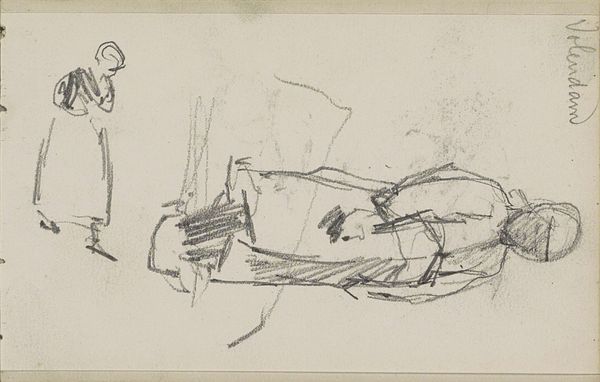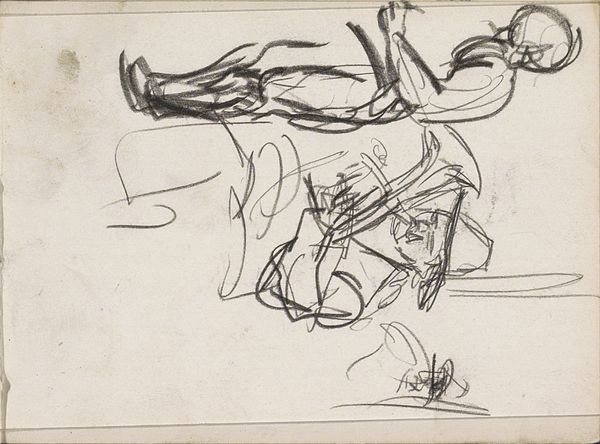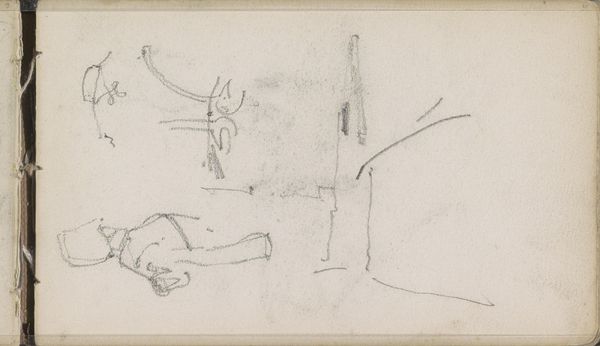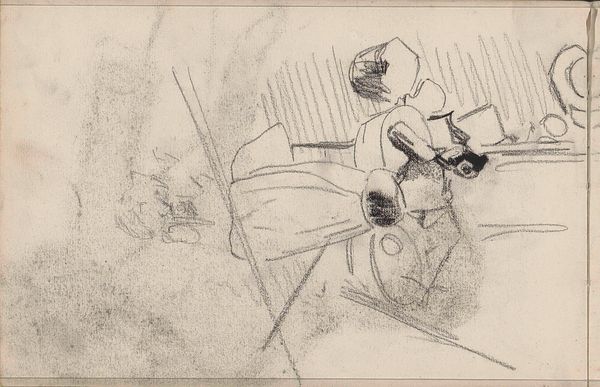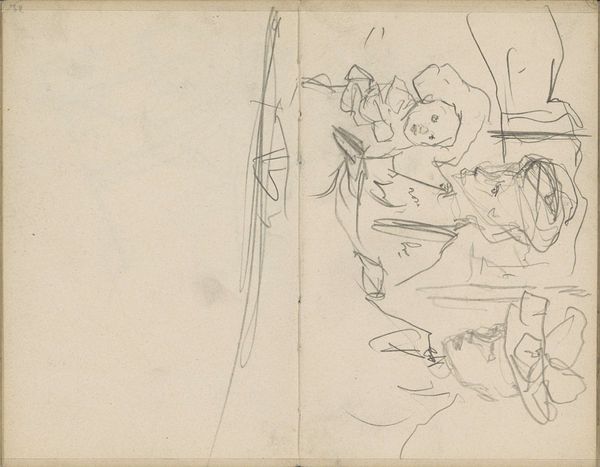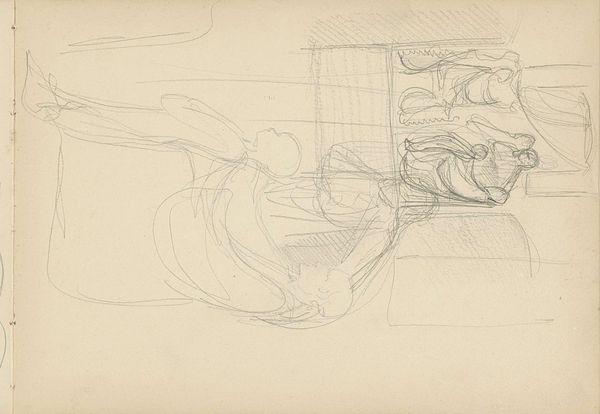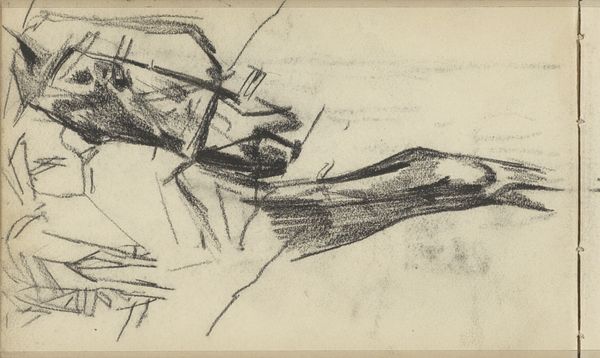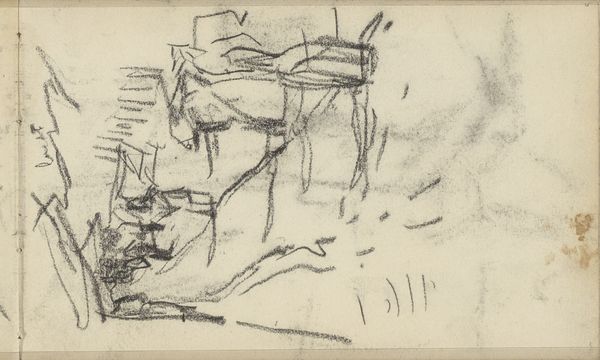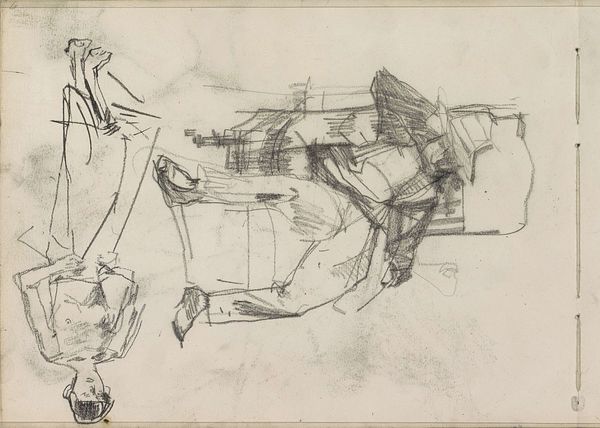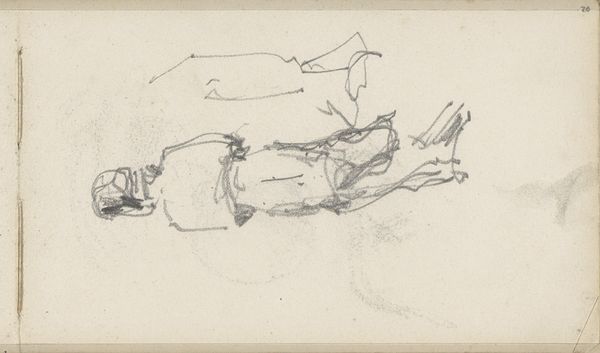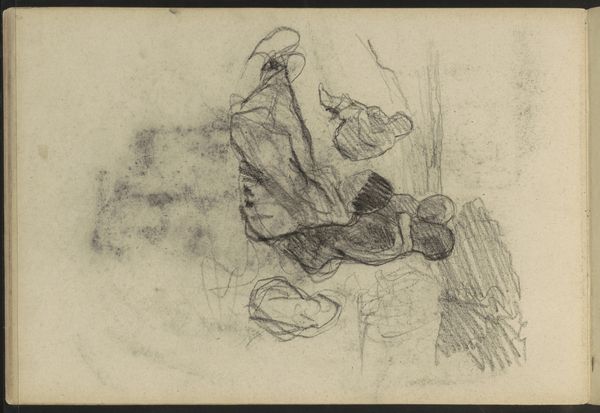
Copyright: Rijks Museum: Open Domain
Editor: This drawing, "Figuren, mogelijk op een straathoek," created by George Hendrik Breitner sometime between 1893 and 1903, is currently held at the Rijksmuseum. It looks like a quick sketch in pencil. What really strikes me is how fleeting the figures seem, like a snapshot capturing a transient moment in time. What do you make of it? Curator: It's interesting you say that. Considering Breitner's context, operating within a rapidly industrializing Amsterdam, we can view this sketch as more than just a fleeting moment. Look at how the figures are rendered. They're generalized, almost anonymous. This mirrors the social reality of the time where urbanization led to a sense of alienation and the individual becoming just another face in the crowd. Do you think the lack of detail contributes to this feeling? Editor: I do. It's almost like they're ghosts in the making, absorbed by the city. I was just thinking about the idea of 'flaneur'--was Breitner trying to document the city, or maybe comment on its social issues? Curator: Exactly! Breitner was known for documenting Amsterdam life, especially its working class. These sketches weren't necessarily finished works of art, but rather records of social observations. The Rijksmuseum acquiring and preserving these works says a lot about the shifting perception of what is culturally valuable - the value of 'everyday life' began to matter. What's your impression of the visual composition and its impact to cultural heritage? Editor: Now that you mention it, the fragmented composition, along with the generalized figures, challenges classical ideals of representation. This shift towards documenting the transient realities of urban life makes this piece particularly important as cultural heritage. Curator: Precisely! It's a visual record of a specific moment in history and marks changes within society that extend beyond the art world. I've come to think of it more as a commentary about changes within 19th century urban society, thank you. Editor: I hadn't considered it that way at first! Thanks for enlightening me about the art's place in social and political sphere.
Comments
No comments
Be the first to comment and join the conversation on the ultimate creative platform.
